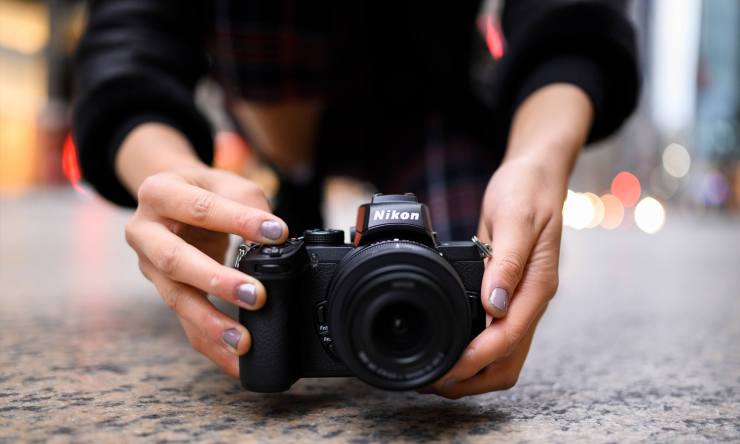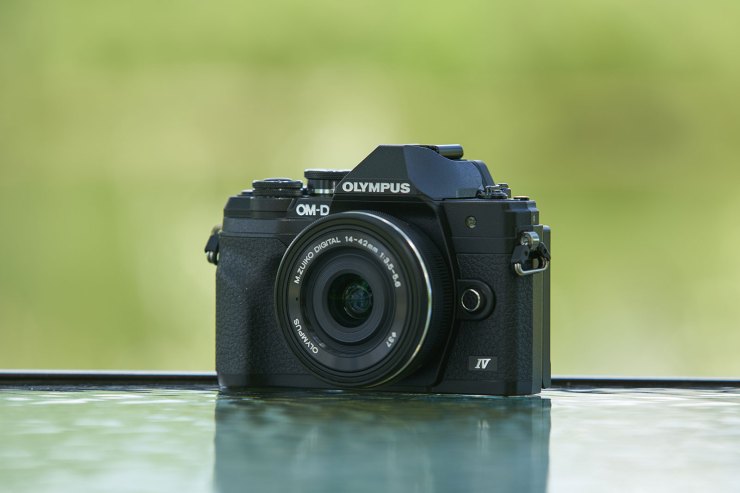If you’re just getting into photography, there are several things to consider when buying a camera. Why do you want a camera in the first place, and what’s drawing you toward photography?
While the question of “which camera should I buy?” may be a simple one, the answer is anything but.
What to ask yourself
Once you’ve decided you want to get into photography, it’s good to know what you like to photograph, and how you like to do so. For instance, do you enjoy capturing scenes on the street? Are you the person at the restaurant table that takes five minutes to photograph their food before you eat it? Or are you looking for a camera that will help you capture your family’s memories?
It’s good to know what you’ll use a camera for because that will ultimately help drive your decision of what to buy.
DSLR vs. mirrorless
Today, mirrorless is emerging as the camera type that’s becoming most popular. While DSLRs are still used among pros, I don’t recommend them. It’s a technology that’s starting to fade away, even though they are still very capable and powerful.
I’ve discussed a few times about the advantages of mirrorless cameras over DSLRs, but simply put, mirrorless cameras tend to innovate a lot quicker than DSLRs. Mirrorless cameras offer great video specs, and autofocus that’s second to none. Features like Eye Autofocus — which became popular when Sony added it to their cameras — are now found on cameras made by Canon, Nikon, Olympus and others.
Brands
In terms of brands, there’s no right or wrong answer. The big brands all offer capable cameras for any photographer.
If you’re looking at pro-level bodies, you’ve probably considered Sony, Canon and Nikon. Or if you want something more compact, Fuji, Olympus and Panasonic are great.

Remember to look at the sensor sizes as well. Sony, Canon and Nikon offer both full-frame and crop sensor bodies, whereas Fuji is crop sensor only (in addition to medium format, but we’ll save that for another article). Olympus offers strictly micro four-thirds cameras, whereas Panasonic offers full-frame and micro four-thirds bodies.
Really it comes down to the features you need as a photographer. If you’re someone who needs to photograph action in low light situations, having a full-frame camera is probably the way you want to go. If you just need something to photograph your family or landscapes, crop sensor and micro four-thirds cameras are great for that.
Budget
If you’re just getting into photography, the budget will ultimately drive your decision more than it will for professionals. Where you’ll see the price difference, more than anywhere else, is when it comes to lenses and accessories. Full-frame lenses tend to be more expensive, while micro four-thirds lenses are usually cheaper. This is definitely something to keep in mind when you’re planning what to buy.
If you go with Canon or Nikon, you won’t find a lot of third-party lenses, if any. But you will be able to use your existing DSLR lenses with an adapter.
On the other hand, Sony shooters have a plethora of lenses to choose from. In addition to Sony branded lenses, Tamron, Sigma and others make quite a few lenses for Sony cameras.
Fuji shooters don’t have a lot of third-party lens options either, while Olympus and Panasonic offer a few from Sigma.

I’m regularly asked for camera recommendations between the range of $500–$1000. You can get some great cameras in this range. Here are my top six buys for cameras under $1000:
- Olympus E-M10 Mark IV with 14-42mm Lens ($749): Olympus upgraded its baseline camera last fall, the E-M10. This comes with a 14-42mm lens (frame of view equivalent to 24-84mm) to get you started. It comes with a variety of art filters and other creative features and is perfect for the beginning photographer. Check out my review here.
- Sony a6400 ($898): While not the latest and greatest, this Sony crop sensor camera offers you a ton of power in a super small footprint. Featuring a 24.2 megapixel sensor, the a6400 allows for up to 11 frames per second, and includes Sony’s Real-time Eye AF feature. It also offers 4K HDR video.
- Nikon Z 50 ($856.95): This crop-sensor offering from Nikon is a great entry level camera, coming in at 20.9 megapixels and up to 11 fps still capture. It includes features like eye detection, impressive low-light performance and 4K shooting. It also has several creative controls to expand your horizons.
- Canon EOS RP ($999.99): What has become somewhat of an afterthought to Canon’s other mirrorless bodies, the EOS RP is impressive, offering a full-frame sensor at a very low price point. Coming in with 26.2 megapixels, the RP includes pro features like dual pixel autofocus, dedicated movie modes and in-camera charging. While 4K video is impressive for this level of camera, on the stills side, you’re limited to 5 fps.
- Fujifilm X-T30 ($899): Fitting right into the middle of Fuji’s lineup is the X-T30, a compact crop sensor camera that offers 26.1 megapixel stills up to 8 fps and 4K video.
- Panasonic Lumix GX9 with 12-60mm lens ($997.99): While Panasonic tends to primarily focus on video, the GX9 is a perfectly capable stills camera. With its compact size, this micro four-thirds camera gives you a 20.3 megapixel sensor. It’s able to record stills at up to 9 fps, or you can drop down the megapixels for stills up to 30 fps. On the video side, like the other cameras above, you can shoot 4K video.
Want something a little cheaper?
In addition to the cameras above, there are some great options if you don’t need the latest and greatest. Here are some of my favorites:
- Olympus E-M10 Mark III with 14-42mm Lens ($599.99): Similar to the E-M10 Mark IV, the Mark III version of the camera is a perfect beginner body.
- Panasonic Lumix GX85 with 12-32mm and 45-150mm lenses ($597.99): This combo usually costs $997.99, but is currently on sale at the time of this writing. This is a great small, compact camera, and because it has two lenses included, you’re set for a variety of shots!
- Sony a6000 with 16-50mm lens ($648): An oldie but a goodie. Released in 2014, you can still find new a6000 cameras from Sony. While it doesn’t have Sony’s latest and greatest technologies when it comes to autofocus and other features, it’s still a very capable camera, even almost seven years after its release.
Get creative
While buying from somewhere like B&H, Amazon or your local camera shop might be a great option for any of the above cameras, if you’re on a tighter budget, you might want to look into used options from a site like MPB.com. Here, I recommend buying a camera body and then a lens separately, if you can, so you can get a little better lens than what comes standard.
Deciding what camera to buy isn’t an easy decision. It takes lots of research. Ultimately, if you’re undecided on what to buy, head into your local camera shop and see how the cameras feel in your hands. Ask for a demo of two cameras you’re deciding between, and make sure the system makes sense to you.
Tell your story with the second annual Visual Storytelling Conference!
Experience four days of interactive, online training sessions featuring a range of educational content with experienced photographers and content creators. This free event kicks off with a series of technical boot camps to build essential skills, followed by live, online sessions on photography, video, business and social media. Join live from March 10-13, 2022!
